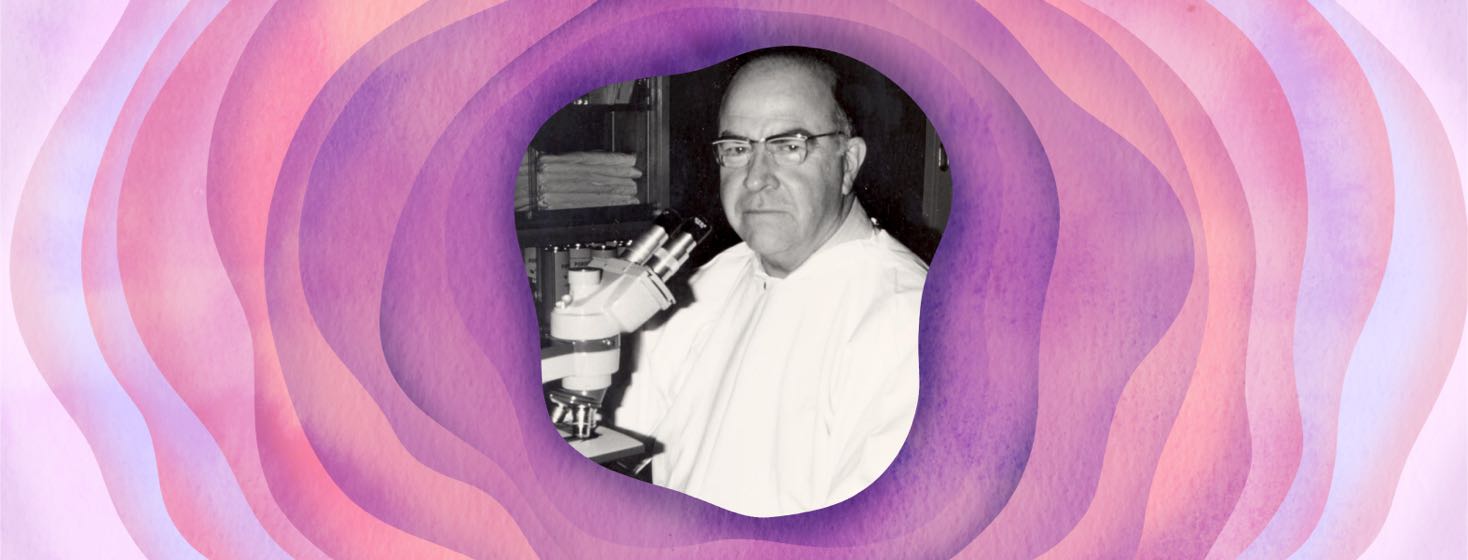The Mohs of Mohs Surgery Was a Trailblazing Man
I have seen Mohs surgery spelled Moh’s, Mose, and even Moes and Moe’s. It is understandable for this to happen. Mohs is a kind of odd word, and certainly not one that we commonly use. For anyone who has called it Moes or Moe’s, I hope I don’t hurt your feelings by pointing this out: That spelling is actually the name of one of the Three Stooges, the Moe of Curly, Larry and Moe fame. His name was Moe Howard, and he was the first of the three to enter show business.
So what is Mohs surgery?
I thought it would be a good idea to straighten this out. Mohs IS actually the name of a man, though not a funny one. Let’s hand it over to the American College of Mohs Surgery: “Mohs Micrographic Surgery is named after its founder and originator, Frederic E. Mohs, MD (1910-2002). As a medical student from 1929 to 1934, Dr. Mohs conducted cancer research projects while working for his mentor and zoology professor, Michael Guyer.” The history lesson continues: “Dr. Guyer was familiar with the preparation of frozen tissue for producing microscopic slides and had authored a book explaining how to harvest and process tissue for microscopic examination. The book focused on the need for examining, drawing and documenting discoveries that were made with the microscope. These microscopic techniques were later used by Dr. Mohs to map out cancer around nerves, blood vessels, muscle and bone."1
The procedure is done in stages
"The cancers he examined were removed by shave or saucerizing excision, a technique that removed cancer as a thin disc of tissue so that the tumor and the inflammatory white-cell infiltrate surrounding the cancer could be examined with the microscope. He began his practice in a one-room clinic of the dermatology suite of the Wisconsin General Hospital in Madison, Wisconsin. And now the technique that bears his name is practiced all over the country. The Skin Cancer Foundation calls it the most effective technique for treating the most common form of skin cancers, basal cell carcinomas (BCCs) and squamous cell carcinomas (SCCs). The procedure is done in stages, including lab work, while the patient waits. This allows the removal of all cancerous cells for the highest cure rate while sparing healthy tissue and leaving the smallest possible scar.”
My experience with Mohs
I have had several Mohs surgery done at two different locations, both in the Boston area. At both, I was amazed at the athleticism with which the surgeon seems to dart from room to room while each patient waits for their cells to be examined. I never asked how many patients they do at once, but I know that it must be at least several. You see patients in the waiting room with a bandage on this or that area of skin. Then they are called back in, to either be told they are done or submit to another “pass.” They get more anesthesia, and the doctor removes more tissue.
Some people have fave passes done
The most passes I've had done is two. These are the times that the doctor has not gotten clear margins and must go back in again. They take off the bandage, cut off some more, and take it back to the microscope. I asked once, and I think they said some get four or five passes before the margin is clear. It is a little nerve-wracking, but much better than what must have happened before Mohs, when patients would get a skin cancer removed and need to wait, likely on pins and needles, for the results while at home, and then have to go back if more needed to be removed. I don’t exactly love it, but I have gotten less tense each time.
One Mohs surgeon didn't work out
The Mohs Surgery Center at Brigham and Women’s Faulkner Hospital in Jamaica Plain is almost a home-away-from-home. My dermatologist and I were not happy about the previous surgeon’s decision to leave a wound open on my neck. It is up to the surgeon whether to stitch a wound or leave it open (both have advantages when it comes to healing), but we felt like he made the wrong choice. I was taking a bus from that appointment to another when I felt blood oozing out from under the bandage. It’s a good thing I was going to another medical appointment, because I needed a lot of mopping up. I was more distressed than in danger, but I didn’t want to go through that again.
Mohs, the man
I've always wanted to know a bit more about the person who revolutionized skin cancer surgery, and whose had such a lasting effect on the field. And now we do!

Join the conversation